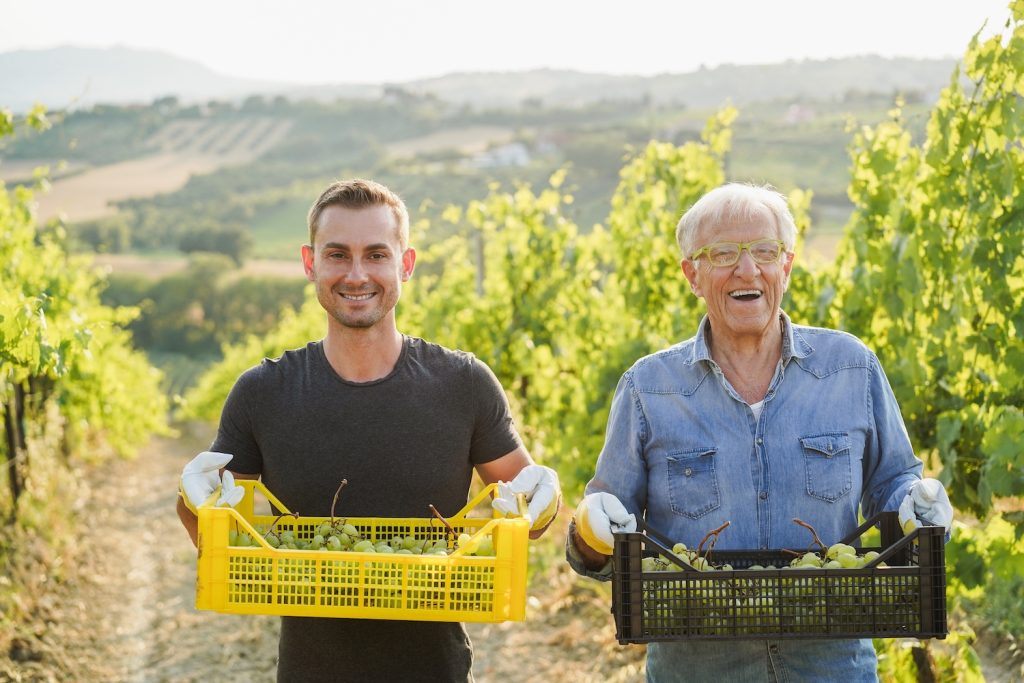Wine, Europe, and Italy in 2025: between restructuring and uncertainty
The Italian Wine Industry Report 2025 highlights a sector navigating cultural and economic transition. As consumption patterns shift, production challenges grow, and export pressures intensify, Italy’s wine landscape continues to evolve in ways that influence both domestic markets and global trade.
Challenging Times
The past few years have been particularly challenging for the wine industry, and as of November 2025, the situation, one that many had hoped would improve, remains essentially unchanged.
Focusing specifically on the European wine sector, it’s clear that wine is going through a significant transformation: consumption is falling, lifestyles are changing, and international markets are facing new challenges.
Global production has risen slightly but remains below historical averages. According to the International Organisation of Vine and Wine (OIV), global wine production for 2025 is estimated at 232 million hectoliters, up 3% from 2024 but still about 7% below the five-year average.
So, what are the key factors behind these dynamics in Europe?
1. Consumption Crisis: Economic Pressure

One of the primary reasons for declining consumption is the ongoing pressure on household income, which necessitates making informed spending choices.
According to data from Interprofesional del Vino de España (OIVE), during the first half of 2025, the global wine market contracted: export values fell by –2.3% to around €16.7 billion, while volumes dropped by –3.7% (about 4.6 billion liters) compared with the same period in 2024, with an average price of €3.57 per liter.
Across Europe, consumption is projected to decline by approximately 3% in 2024/25 (European Commission – DG Agriculture).
What do these numbers mean? Simply that:
• Consumers are opting for more affordable wines or drinking less frequently.
• Producers must rethink pricing, cost structures, and distribution strategies to stay competitive.
• With high costs for glass, energy, and logistics, pressure on margins remains intense.
2. Consumption Crisis: The Shift Toward Healthier Lifestyles
Alongside economic pressure, a more profound cultural shift is underway: alcohol—and therefore wine—is being reinterpreted through a more health-conscious lens.
The OIV reports that in 2024, global consumption decreased to 214.2 million hectoliters, a 3.3% decline compared to 2023.
In advanced markets, attention is increasingly shifting toward low- and no-alcohol alternatives, more occasional drinking, and beverages other than traditional wine. In Italy, an ICE–Canada study noted that in North America and Northern Europe, “the culture of daily wine drinking” is in decline. As the survey The Change in Wine Consumption in Italy put it:
“In recent decades, wine has stopped being considered an everyday food to become a hedonistic and intellectual pleasure.”
These are not sterile statistics relevant only to trade professionals; they highlight that wine must reinvent itself. Product quality alone is no longer enough: packaging now plays a decisive role.
Alternative formats, such as cans and smaller bottles, are becoming more common. However, they still face resistance from part of the industry, which views any packaging other than traditional glass as diminishing product value.
3. Too Much Wine for the Current Demand

The combination of relatively high production and declining consumption continues to create an imbalance between supply and demand.
The OIV notes that even with the slight increase in 2025, global production remains “historically low” relative to the average, a sign that the imbalance persists.
In Italy, wine stocks at the end of 2024 remained substantial—about 56.9 million hectoliters—although slightly lower than the previous year.
4. Loss of Appeal Among Certain Consumer Segments

A more qualitative, yet equally relevant, issue concerns wine’s image. For a growing segment of consumers—especially younger ones—traditional wine has lost some of its appeal. It’s no longer the “automatic” everyday beverage it once was, and competition from craft beer, cocktails, RTDs, and low- or no-alcohol drinks is increasingly intense.
Recent research shows that among young adults, the share of those who say they want to reduce alcohol consumption has risen significantly (a trend affecting all alcohol, not just wine).
In Italy, per-capita wine consumption has been declining since the 1970s, although this trend had not yet become a structural issue for the sector until recently. Back then, 16.58 liters of pure alcohol per person were consumed in the form of wine; by 2010, the figure had dropped to 4.45 liters, rising slightly to 4.83 in 2019.
5. Challenging Markets: The U.S. and Tariffs
Among the most complex markets in 2025 is undoubtedly the United States, which has long been one of the most important export destinations for European—and particularly Italian—wine.
As of August 1, 2025, the U.S. introduced a 15% import tariff on wine and spirits from the European Union, a measure that immediately affected the competitiveness of European products.
According to the Unione Italiana Vini (UIV), Italy’s potential impact exceeds €300 million in lost value in the first year alone, with mid-range and entry-level wines being most exposed to rising costs. Producers now face a difficult choice: absorb the price increase, sacrificing margins, or pass it on to consumers, risking a loss of market share in an already sluggish environment.
In this scenario, producers from the so-called New World (United States, Chile, Australia, and South Africa) may gain ground due to greater commercial flexibility and lower market entry costs.
Nevertheless, the American market remains one of the most strategic for Italian wine—not because of exclusivity, but for its visibility, average value, and influence on global trends. The new tariffs, therefore, highlight the fragility of today’s international trade environment more than any geographic dependency. Looking ahead, the situation underscores the need to strengthen overall competitiveness through branding, positioning, and market strategies that make European wine more resilient to political and economic shocks.
Final Reflection
These reflections and scenarios are constantly evolving. In my view, there is no single solution to support a sector undergoing such a profound transformation.
Yet one question lingers: are we really sure that “convincing” people to drink wine is the right approach?

Perhaps we are simply facing a cultural shift we cannot reverse—one we can only adapt to. A new world, with new habits and generations who experience wine differently from those of us who lived through its golden age.
The phrase we’ve heard for decades, “people drink less, but better,” is finally coming true.
The real question now is whether there will be enough consumers for all the wine we continue to produce.


